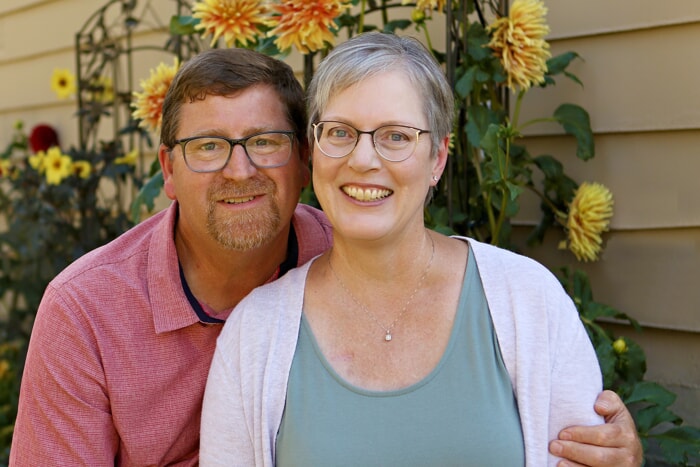Conquering Breast Cancer
Oct 25, 2021

Here’s how one woman stayed positive through her treatment.
When Kelly MacMillan missed her annual mammogram, she figured she would just wait another year to get screened for breast cancer. Her primary care provider recommended that she get a mammogram sooner, however, so she scheduled an appointment. “After the mammogram, I got a call that they wanted to do a biopsy because something showed up on the scan,” MacMillan says.
Shortly after the biopsy, in which her breast tissue was examined for cancerous cells, MacMillan was diagnosed with an aggressive form of breast cancer. “I was extremely frightened,” she recalls. “The word cancer brings up so many emotions.
I felt scared, and I was concerned about my family.”
Like MacMillan, 1 in 8 women in the U.S. will develop breast cancer. Knowing the risks and identifying symptoms can lead to early detection, which may have a significant benefit on treatment.
Know your risk
Breast cancer often starts in the milk ducts, but can also be found in the glands or breast tissues. Women older than 40 are at higher risk of breast cancer, though it can affect younger women and even men. Other lifestyle factors, such as being overweight in menopause, low physical activity and hormone replacement therapy, can also increase a person’s chances of developing cancer.
A family history of breast cancer may increase the likelihood of diagnosis, though it’s not always the case. “My mother and aunt both had breast cancer, but it was a completely different type than what I had,” MacMillan says. “I did genetic testing, and there was no hereditary link.”
Care that goes above and beyond
After her diagnosis, MacMillan met with Maria Watson, a breast health nurse navigator at Adventist Health Ukiah Valley, to discuss treatment. MacMillan credits her care team, including surgeon Kathleen Persky, MD, hematologist-oncologist Hengbing Wang, MD, nurse practitioner April Wu, and nurses Hope Moroni, Melisa Yim and Harmisha Desai, for helping her through treatment. “I decided to set my mindset to ‘I’m making it through this,’ but I still had hard days,” MacMillan says. “When I had those days, Hope and Melisa were there to scoop me up, hug me, cry with me, then encourage me. I consider them friends now.”
A positive outlook
Though her breast cancer journey was challenging, now that she has been cancer-free for more than two years, MacMillan doesn’t look back on it negatively. “It wasn’t an easy time, but in a way, it was a great time,” she says. “I did everything I could to stay positive. I journaled, ate well and spent my time outside gardening — to this day, my garden is my peaceful spot.”
Her advice for other women? “Don’t skip your mammogram. If I had waited another year, it could have been a lot worse,” she says. “And if you have cancer, stay positive and lean on your support team.”
3D mammograms: innovative technology
Like many women with breast cancer, Kelly MacMillan had her tumor discovered during a routine mammogram, which uses a low dose of radiation to take X-ray images of the breast. Adventist Health in Mendocino County offers state-of-the-art 3D mammogram technology for higher-quality imaging. “A 3D mammogram gives a better image for the radiologist to see potential cancer,” says Maria Watson, a breast health nurse navigator at Adventist Health Ukiah Valley. “It shows layers of breast tissue, allowing for a clearer, more detailed picture.”
Adventist Health’s cancer experts recommend that women older than 40 get a mammogram every year. “With regular mammogram screenings, we are more likely to find cancers at an earlier stage when treatment can be less invasive,” Watson says. “The earlier the diagnosis, the higher the likelihood for beating the cancer while minimizing the treatment’s effect on quality of life.”
Schedule your mammogram
Talk to your provider to make a plan for breast cancer screening. Visit AdventistHealth.org/Doctors to find a provider.


